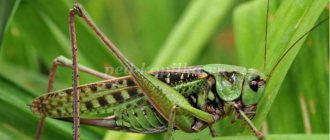About sugar from a chemist's point of view. Chemistry in the kitchen 2
The ancient form of packaging sugar is “sugar loaf.” I’m posting a continuation, as promised.
The first post was about salt. About sugar.
What types of sugars are there? Is it about maple sugar and sugar? Icicles made from maple sap are a valuable gift from nature. Mono- and multi-saccharides. What do a lobster, a tarantula, a Christmas tree, a mushroom, honey and a Kassam rocket have in common? We are performing a chemical experiment on the transformation of starch... How to show off your erudition. Fructose - benefits and harm, two sides of the issue. Who is to blame for the stomach ache from milk? How does it happen that sour jam is less sugary? What is honey made from? What is sugar made from? About cane sugar - we eat it for its taste. Hi all! After the stories about the “white death”, I wanted to talk about the “sweet” one. This is a pun, a joke of humor. The question of harm, and in this case, as you already guess, lies mainly in excessive consumption. Well, it means that there are many different types of sugar on the shelf, both local and foreign, and they begin to figure out which one is better... Stop! We won’t allow a fight, and we’ll sort it out ourselves.
Maple Sap Syrup
So we’ll start the debriefing with it, because it’s not enough and it’s an interesting thing. This is a traditional product that was obtained in the USA and Canada at a time when there was no beet sugar yet, and cane sugar was expensive. It is obtained by evaporating spring maple sap. By the way, you probably know that just like from a birch tree, in the spring, you can extract sap from a maple tree, and not necessarily in America. During my stay in Troitsk, near Moscow, there was such a spring that the frost was still holding on, but the sap in the trees had already begun to move. As a result, icicles began to grow from all the cracks and breaks on the branches.
Really tasty icicles
Having calculated the nature of the formation of these strangely high-hanging icicles, I tasted them... in general, the first sap from any tree is sweet, reeks of wood, some tree species gave it very tasty, some had an unpleasant aftertaste, but it was sweet. So there is nothing surprising in maple sugar, but there are quite a lot of minerals, and its sweetness is determined by... Oops!
But it turns out that this is not sugar at all, but only its close chemical relative - glucose. It is obtained in the tree by breaking down starch accumulated in autumn. So, easily and naturally, we came to the topic of mono-, di-, and polysaccharides.
I'll try to make things clear. Sugars are a whole class of compounds, also called carbohydrates. In fact, there is some kind of semantic difference between them, a vague one, but we are unlikely to be greatly shamed for not knowing it. In general, the plant kingdom turns out to consist mainly of a wide variety of carbohydrates, or otherwise poly-, oligo-, tri-, di- and monosaccharides. At the same time, some of them are sweet... Surprised?
So: in general, what do sugars or carbohydrates mean in chemistry?
Well, they were called that because, at the beginning of the development of chemistry, their analysis showed that they seemed to consist of a mixture of water and carbon molecules. At that time, they had not yet delved into the intricacies of the structure of the molecule - that is, how the atoms are connected to each other. And is it important. Analysis was most often carried out in the simplest way - burning and weighing. After combustion, the amount of carbon, hydrogen and oxygen contained in a sample of the substance became known. And sugars - of course - sugar was at hand, and things chemically similar to it began to be called (mono, di... poly-) - saccharides or carbohydrates. The simplest molecules of sugars, which could no longer be broken down by boiling in water with acid, were called monosaccharides; sugars, one molecule of which was split into two molecules of monosaccharides, were called disaccharides. Oligosaccharides are sugars made up of small amounts of monosaccharides. In this place, everyone comes up with a nice joke about oligarchs and oligosaccharides. It's asking itself. Polysaccharides are a variety of natural polymers made from monosaccharides.
You will be surprised, but the crab shell, tarantula skin and the main substance of mushrooms consist of a polysaccharide - chitin.
Oh, what a temptation it is to start producing “crab sugar.” Or “scorpio”, or even “mushroom”. Or even vodka. No! Does not work. The monosaccharide from chitin, although not sweet, is very interesting. This glucosamine is a popular remedy for joint pain. Although official medicine and experiments show that a placebo works almost as well. Only, if it really hurts, then a positive effect was noticed. Although, many people swear that it really helps them. This substance can be made from shrimp skins. But if you make a trisaccharide - chitosan - from this chitin, you will get a means for weight loss and a promising means for healing wounds. A powerful polysaccharide is cellulose (it consists of glucose, by the way), um... trees, paper, cotton and smokeless gunpowder are made from it. The first artificial plastic was made from nitrocellulose and was used to make billiard balls and piano keys. Before this, ivory had to be used.
Pectin
- also a natural polysaccharide, there is a lot of it in apples and citrus fruits (and not only). The monosaccharide from which it consists is not very familiar to us and I can’t say anything interesting about it, but I won’t burden you with unnecessary stuff. The beauty of pectin is that it is easy and pleasant to extract from juice cake. In general, there are plenty of raw materials. Moreover, this is not some kind of synthetic, it is quite a natural product. Ancient marmalade and marshmallows owe their origin to apples, or rather their pectin. Apparently, just boiled apple pulp was added to the old marshmallows - or not very peeled, even sawdust from apple seeds was found, so it was grayish and had an interesting, natural taste. There, in the composition, apples appear or apple pectin. I do not remember.
Looks like apple marmalade from my youth
And apple marmalade made do with natural pectin obtained from apples during cooking. Pectin is almost not absorbed by the body, but it combines well with ions of heavy metals and radionuclides (which is the same thing, it doesn’t feel radiation, it senses heavy metal. Chemistry) - this is used in medicine. A good property for a food additive, blocking toxic heavy metals (many of the heavy metals are poisonous).
Cross section of glycogen. In the middle there is protein. Around there is a coat of glucose particles.
And here is another polysaccharide - glycogen - the main storage carbohydrate of humans and animals. It is deposited in the muscles and liver. Unlike the energy reserve stored in fats, glycogen is broken down quickly, but its reserves are small. This is an energy reserve for relatively short-term loads.
Well, a common carbohydrate is starch.
Of the carbohydrates, this is still what we eat the most. The monosaccharide from which starch is built is glucose. That's why we eat.
This is how chemists draw glycogen and starch molecules
Attention, experience!
I offer chemistry experience for homework. Do it on an empty stomach. The hungrier you are, the higher the activity of the amylase enzyme in your saliva. Take a piece of bread, black, unsweetened, and chew it. For a long time. As you chew, you will see that the bread becomes sweeter and sweeter. The starch in bread, under the action of the enzyme amylase, is converted into sweet maltose (glucose). This is the laboratory!
Also, if you heat starch (to the appropriate temperature), it will become “modified” or, in the old-fashioned way, “dextrin”.
It will simply dissolve better, even in cold water. Not to be confused with GM! That's why cooks often fry flour to make sauce - it will dissolve in warm water, and there will be no lumps when preparing the sauce. You can make bechamel sauce and consider it homework - get the recipe from the Internet.
Flour, turns, turns into an elegant sauce
The title promised to mention the Arab people's rocket "Qassam", which has something to do with sugar in that its fuel consists of a mixture of sugar and fertilizer - saltpeter. A very budget option. Fans of home-made, low-budget rocket science also greatly respect the mixture of molten sugar and saltpeter, due to its comparative safety, ease of working with it, and accessibility.
So our sugar has many relatives - like a Chinese with the surname Wang. We ran through all this wealth. Just to make it interesting.
And now, attention!
The thing you need to know in order to be considered a subtle connoisseur of chemistry: - carbohydrates, this is everything consisting of sugars and starch (usually they say this about what they eat, but as we have seen, this is not entirely true - a lobster shell is difficult to eat, and even more difficult to digest ). Hydrocarbons are anything that smells like gasoline and is flammable, even gas. This is eaten in the only case - baby Vaseline for constipation. And even then, because, just as it came in, it came out, and it’s not assimilated. It’s easy to remember - (carbon-)hydrogen is a gas, you can’t eat it, (carbon-)water is water, you can drink it, which means it’s edible. Now you can show off your erudition at any party. And during translations.
So. We found out that there are a lot of these sugars, mono and others. Let's not dramatize. In real life, we care about very few of them. Let's talk about them. Monosaccharides glucose and fructose are consumed by us in their pure form and are even easily digested.
Glucose
is absorbed instantly. Actually, it is carried by the blood throughout our body to obtain energy, like fuel.
Fructose
— this monosaccharide began to be produced in its pure form relatively recently, 30-50 years ago. Before that, it was extracted in its pure form, it seems, from gladiolus tubers. They didn’t know how to separate fructose from glucose, for example from honey. That's why it was medicine. Fructose was considered a good sugar substitute - it is one and a half times sweeter than it, which means it will bring fewer calories, it does not increase blood sugar levels, it is not absorbed as quickly as glucose, which means it will not be immediately stored in fat. It is less harmful to teeth than sugar because it is less easily absorbed by microbes. Now that they have learned to make fructose cheaply and in large quantities from sugar, other factors have begun to become clear. It turned out that even though it is sweeter, people do not use less fructose, but drink sweeter ones. Also, glucose immediately enters the blood and one of the mechanisms of saturation begins to work in us - the glucose level rises and we stop wanting to eat. The second mechanism is when the stomach fullness sensor is triggered 8)). Also, fructose is absorbed only by the liver, so if there is an excess of calories, it is stored there in fat. And what conclusion can be drawn? If you eat as much as you need, and regulate the caloric content of your food and the amount of movement, foods with fructose will not cause harm. But with real people this doesn’t always happen. So who is to blame for fructose or overeating? “It was the girl’s fault that the man pestered her—she was too beautiful.”
So, definitely - if you are hungry and drink a little fructose-containing drink, it will be useful. Excess - no. I’ll add a few facts so that you can take a more philosophical look at publications on fructose. Our favorite sugar (chemists call it sucrose) is a disaccharide, its molecule is made from one molecule of glucose and one molecule of fructose. In the body, it is necessarily broken down into fructose and glucose. And this has been the case since time immemorial. Bee honey, as it was beautifully defined somewhere, is “the belching of insects from the semi-digested secretions of the genital organs of plants.” Hehe. So, honey contains fructose and glucose in half. Fructose in fruits is, in general, definitely beneficial - apples, pears, figs contain quite a lot of fructose. So, I see the cause of the harm as overeating caused by unnaturally tasty foods. And here's another touch. We forgot about it, but it happened, and it was good. Invert sugar. And what is it? The sugar solution was boiled with a small amount of sulfuric acid. Yes, in this case the sucrose molecule fell apart into the original fructose and glucose. The acid was precipitated with chalk. Excess chalk and the resulting gypsum were filtered out. As you can see, nothing criminal. Gypsum and chalk are sources of calcium. What is the point of the reaction? The resulting solution was one and a half times sweeter than the original sugar. Due to the sweetness of fructose and glucose.
The same thing happens in bees, only they use a special enzyme. This solution has another unobvious advantage. It sugars much more slowly than the original sugar syrup. Bees know this too; it is difficult for them to work with candied honey - they have no spoons or teeth. Why is it more difficult to sugar? Just don’t be offended (in the voice of Mkrtchan - from Mimino), I will now tell you one thing that is obvious to a chemist: - When a crystal of any substance grows, only molecules of the type from which this crystal is composed grow on its surface. In any case, this is what they strive for. And strongly. Therefore, recrystallization has been a favorite method for purifying many substances since ancient times. They dissolved the dirty, grew crystals, separated the residues, the crystals will be much cleaner. So, when we have two different sugars in solution, the possible centers of crystal growth see only their own molecules and it turns out that there are half as many opportunities for crystal growth (sugarification).
A little about honey.
Honey is a historically popular product and sanctified by tradition. Even the ancient Romans enjoyed a drink made from honey mixed with grape juice. And nothing stuck together for them. It is difficult for us to penetrate those sensations. Yes, in those days there was nothing as concentratedly sweet and nutritious as honey. The food was quite coarse, low in fat and with very little sweets, so eating honey caused an unusually rapid surge of strength and satiety. Even from a small amount. In the movie "The Legend of Narayama", the people are extremely poor, eating almost nothing but hard-to-digest beans. One of the old women was about to die. She felt bad. Before her death, they cooked rice for her - a much more easily digestible product. The old woman ate and she felt good, she recovered. Thanks to the miraculous power of rice.
The process of collecting and preparing honey by bees is also impressive. Handmade, so small! First, the bee flies around a thousand flowers and collects 70 milligrams of nectar, takes it to the hive, where special workers chew it for a long time for fermentation, then lay it out on the honeycombs and evaporate it to the desired condition, fanning it with their wings. Seal with wax. And only then is the honey ready. From a chemical point of view, honey consists mainly of a mixture of fructose, glucose and very few other sugars. The remaining substances make up about 3%. I’m afraid of incurring the wrath of readers, but don’t forget - I’m a chemist: advertising publications about the composition of honey are unclear and illogical, just like about Himalayan salt. There are some enzymes there, mainly amylase - honey with hot tea leads to the destruction of the enzymes that were there (amylase and others, if they survive, it is not difficult to destroy them, even with slight heating). Again, an enzyme is a natural catalyst, an accelerator of some kind of chemical reaction. Well, there is an enzyme in honey that breaks down starch into maltose and sucrose into glucose and fructose, but what good does that do us? The bun will be digested a little better. That's not why we love you. Sometimes people and children are allergic to honey, sometimes they don’t like honey. No need to worry, there are many other healthy products in the world. But! Let's remember the metaphor that a person is the sum of “hard” and “soft”. Software is our emotions, feelings, beliefs and faith. If you find it pleasant and good to drink tea with honey, drink it for your health, it will be beneficial. I won’t tell you how to choose good honey, I don’t know. I don’t buy it at all; my wife’s uncle is a beekeeper. Gives.
I’ll say a little about other saccharides, various di- and trisaccharides. For example, peas contain a certain trisaccharide, which, for the most part, is not absorbed by us. But the intestinal microbes begin to greedily gobble it up. The result is a rumbling in the stomach, and I’m not afraid of this expression: “the emission of winds.” There is another sugar in milk - lactose, which is not absorbed by all people. That is, young children have an enzyme to break it down, but in adults its activity may drop completely. In general, a mutation that allows the absorption of milk sugar appeared in Europe 5000 years ago, and is associated with the domestication of dairy cattle. So, if milk gives you a stomach ache, you are not European. And if you can drink milk in liters, then you are a European mutant. This is such a joke.
Let us now move away from these terrible problems to our simple, good sweet sucrose.
So they extract it in two ways: - the first is the most familiar and well-known to us - from sugar beets (they are white). By the way, have you tried it?
Sugar beets don't taste very good
But sweet. So, sugar is washed out of beet chips. The resulting brown solution is cleaned of impurities with lime, carbon dioxide and sulfur dioxide - sulfur dioxide is a smelly gas produced by the combustion of sulfur, it is used to clean basements and greenhouses of all kinds of fungi and pests, and gives a wonderful light color to dried apricots and raisins. There is no particular harm from it; it is safely neutralized and turns into harmless sulfates. So, the solution is evaporated and treated with activated carbon to obtain refined sugar. It binds all the coloring and smelly substances on its surface and the result is a completely transparent solution. By the way, beet sugar is traditionally refined with hardwood charcoal, but refined cane sugar (which turns completely white) is traditionally refined with bone charcoal. Coal obtained by burning the bones of animals (mostly cows, probably - don’t be afraid, nothing organic remains there, coal, calcium phosphates, everything is insoluble). So beet sugar can be considered quite lean (vegetarian?). Well, unrefined cane, because no animals were involved in the process of their preparation.
In fact, the issue of the leanness of sugar is resolved purely by directives, I think. Let's return to the purified sugar syrup - it is evaporated, a seed of sugar crystals is introduced, the falling crystals are separated and dried. This is how we get refined granulated sugar. Previously, solid refined sugar was made from it. Mix granulated sugar with sugar syrup. The thing turned out to be hard - vigorous and economical. While you dissolve or chew a piece, drink three glasses of tea. Now lump, instant sugar is made by treating granulated sugar with steam and pressing. The result is a much more palatable product.
Sugar cane
With cane sugar, everything is similar and everything is different. This was the first type of sugar that people started making. It is obtained from sugar cane juice. It turns out to be a thick brown syrup. But its taste is pleasant, although the color is very dark. This syrup can be found in stores, but before you buy, take a closer look - it should say that it is made specifically from sugar cane. They also sell unrefined cane sugar. They also sell dark lump cane sugar; it seems to be made from a mixture of refined and cane syrup, which tastes good.
Dark cane lump sugar
With price, an interesting relationship emerges - the closer the product is to dried cane juice, the more expensive it is... Although it is not logical in the extreme. The more we tinker with cane sugar at the factory, the cheaper it becomes... Marketing paradoxes. And here is an even darker product - farina sugar. Soft, dark-colored sugar paste. Also made of reed.
Farina sugar
It also happens - Coarse caramel sugar. Large, beautiful crystals of a golden-dark color. Alas, the color in this case is due to the addition of caramelized (heated) sugar and is not associated with substances from the cane grass, which means its taste is sugar.
Coarse caramel sugar
Let’s finish this topic - although there are also non-sugar sweeteners... maybe someday we’ll talk about that too. And our conclusion will be this: all sugar is, in some way, an artificial thing, an apple is healthier in every way, and if you want to eat sugar, choose the one you like. Taste or color can also carry positive emotions, and this, you see, is good.
Thank you for your attention. Now I'll think about the next post. I don’t have any more ready-made, so I don’t know when it will be, it’s how the Muses decide. See previous post
Sweet life: 4 unusual ways to use sugar. Sugar crystal recipe inside!
We have a stereotype firmly rooted in our heads: sugar is white death. Many housewives do not like this product and try to add less sugar to food and drinks. But eating is not the only use of sugar. There are other ways to sweeten life and not ruin your figure.
1. Serving
Sugar can appear on the table not only as an additive to tea, but also in other forms: for example, from melted sugar you can make beautiful bowls for serving ice cream.
And if there is a holiday coming up, you can decorate the edges of glasses or glasses with granulated sugar.
2. Cosmetics
Granulated sugar consists of hard particles that can exfoliate the skin without damaging it. Therefore, sugar is an excellent base for natural scrubs. Add cosmetic oil to sugar to make an excellent body scrub, or mix sugar with honey and use this mixture for your lips.
3. Decoration
It's no secret that crystals can be made from sugar.
How to make sugar crystals Dissolve sugar in boiling water in a ratio of 3:1. If you want to make the crystals colored, add a couple of drops of food coloring to the solution. Pour the mixture into a clean glass jar and insert a wooden stick or dip a thread into it. After a few days, sugar crystals will grow around the stick or thread.
There is another way to create crystals from sugar. Make the same sugar solution, pour it in a thin layer onto an oiled tray and wait until it dries. You will get a transparent sugar layer that looks like glass. All that remains is to break it into pieces and the sugar crystals are ready.
Look how beautifully you can decorate any dessert using these crystals.
Of course, to create such masterpieces you need preparation, but beginners can easily use sugar for their first culinary masterpieces - just melt the sugar and “draw” any shape with it.
When the sugar hardens, the decoration is ready!
4. Gift People value homemade gifts much more than store-bought ones. Your friend will surely appreciate the sweet addition to the gift made by you personally. Sugar will help here too: you can make unusual candies,
sugar hearts
or icing sugar to decorate homemade cookies.
Of course, there are many more unusual ways to use sugar - they are limited only by your imagination. What interesting sugar ideas do you have? Share in the comments!
Sugar - friend or foe?
How to properly arrange your home; which foods are healthy and which are harmful; how to prevent many diseases, that is, how to live not only healthy, but healthy.
Only the lazy have not heard that sugar is harmful to health and contributes to excess weight. Some seek to exclude it from the diet, others reduce the dose or choose sweeteners. In pursuit of a slim body, many people forget that sugar not only harms, but also benefits our body. So is it possible and should you completely give up sweets? Let's weigh all the pros and cons and find out whether sugar is our friend or foe.
Benefit
1. Sugar is food for the brain
Brain neurons receive energy only from glucose, that is, from real sugar, and not its substitute. If they are not given glucose, they will not function. For example, the frontal lobes of the brain control all human mental activity and react very sharply to a decrease in blood sugar levels. To the point that a person’s consciousness may become confused if there is a lack of glucose. When blood sugar levels drop, the brain signals that it is “hungry” and requires carbohydrates to keep its functions intact. As soon as glucose enters the blood, the hunger signal stops.
2. Sugar is nutrition for muscles
Glucose is the most accessible energy material for muscle contraction. The muscles receive energy, begin to work, and the person is able to move.
Elena Malysheva.
Harm
1. Destruction of blood vessels
Modern man generally leads a sedentary lifestyle, and he simply does not have time to use up the glucose he receives. Excess glucose in the blood, or diabetes, destroys the epithelium of blood vessels and leads to atherosclerosis. This is why a prerequisite for treating diabetes is to move more, since physical activity lowers blood sugar levels.
2. Excess weight
Excessive consumption of sugar, combined with inactivity, leads to excess weight. Energy from glucose comes in, but is not burned, but turns into fat and is stored in problem areas. Therefore, it is worth monitoring how much sugar you consume. The recommended dose is 24 grams, or 5 teaspoons of sugar per day. You need to take into account not only granulated sugar itself, but also products with a lot of sugar. So, an apple contains 2 grams of sugar, a piece of white bread - 12, a chocolate candy - 10 grams of sugar, and one glass of fruit juice - as much as 26 grams!
To reduce your sugar intake, you should replace sweets and cakes with fruit. This will make it easier for you to calculate how much sugar you have eaten, and besides, fruits are much healthier for the body than flour products.
ABOUT FOOD
Superfood for clear skin
Each product has its own special properties that can be used for beauty and health. For example, the well-known sea buckthorn, carrots and wheat germ are the best helpers in the fight against problem skin. If you have acne on your face, these products will help get rid of it.
Carrot
Carrots contain beta-carotene, a precursor to vitamin A. It is this pigment that colors carrots orange. Vitamin A reduces sebum production, thereby getting rid of acne - clogged sebaceous glands. Vitamin A is also involved in skin regeneration. The recommended daily dose is a quarter of a medium-sized carrot.
wheat sprouts
They are rich in zinc, and zinc fights microbial inflammation on the skin - acne. It is recommended to consume 90 grams of wheat grass per day.
Sea buckthorn
Our skin is made up of several layers of cells. The old layers of skin are on the surface. The keratinized scales clog the sebaceous glands, resulting in acne. Vitamins E (tocopherol) and C, which are contained in sea buckthorn, promote proper growth of skin cells and exfoliation of the stratum corneum.
For the best effect, it is recommended to consume 8 grams of sea buckthorn per day.
LOOK
First, “Live Healthy!”, weekdays/9.50










